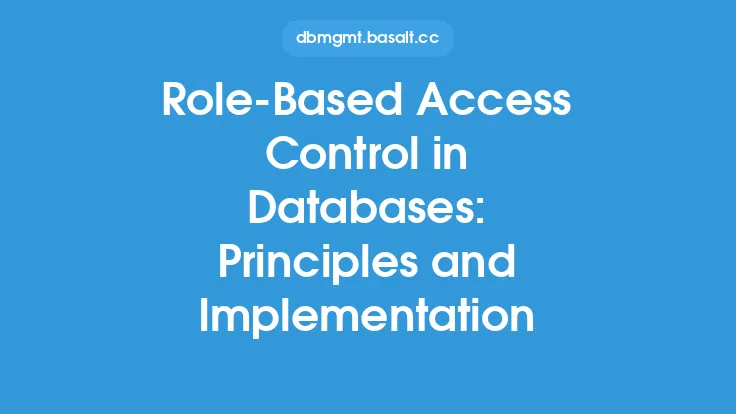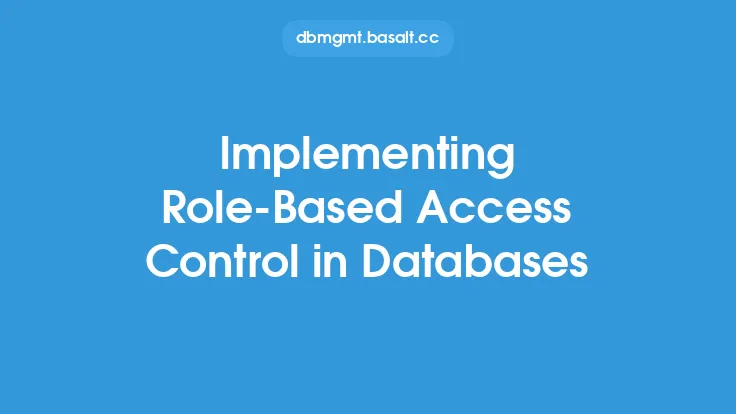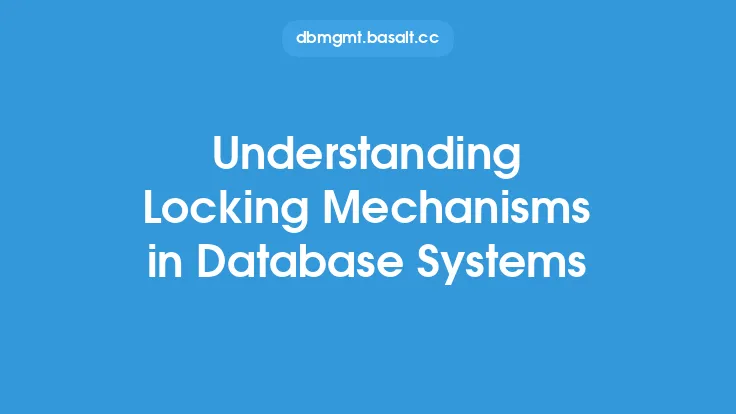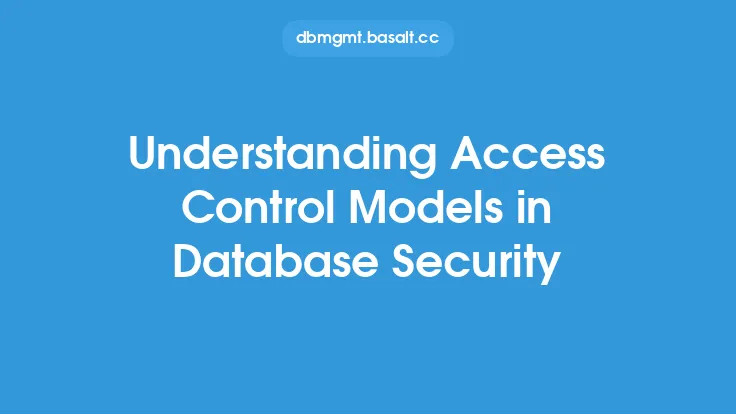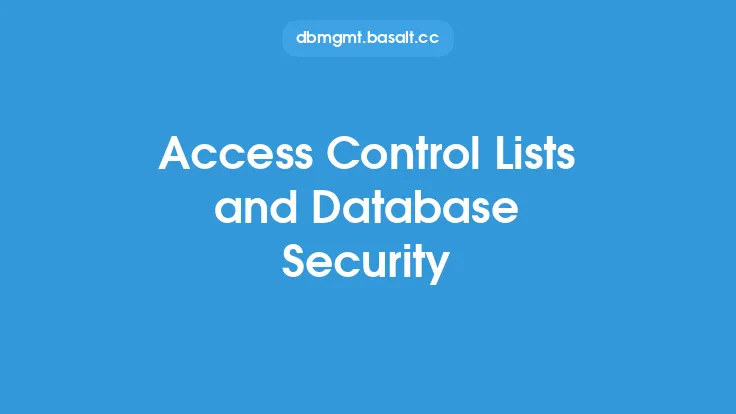Database systems are a crucial component of modern computing, storing and managing vast amounts of sensitive data. As such, ensuring the security and integrity of this data is of paramount importance. One key aspect of database security is access control, which involves regulating who can access, modify, or delete data within the database. Fine-grained access control is a particularly important concept in this context, as it allows for precise control over access to specific data elements. In this article, we will delve into the world of fine-grained access control in database systems, exploring its principles, benefits, and implementation strategies.
Introduction to Fine-Grained Access Control
Fine-grained access control refers to the ability to control access to specific data elements within a database, rather than simply granting or denying access to the entire database. This approach allows for a high degree of precision and flexibility, enabling administrators to tailor access permissions to the specific needs of individual users or groups. Fine-grained access control is particularly important in environments where sensitive data is stored, such as financial or healthcare databases, where unauthorized access could have serious consequences.
Principles of Fine-Grained Access Control
Fine-grained access control is based on several key principles, including:
- Discretionary Access Control (DAC): This principle involves granting access to data based on the identity of the user or group requesting access. DAC is often implemented using access control lists (ACLs) or permissions matrices.
- Mandatory Access Control (MAC): This principle involves granting access to data based on a set of predefined rules or policies, rather than the identity of the user or group. MAC is often used in environments where sensitive data is stored, such as military or government databases.
- Role-Based Access Control (RBAC): This principle involves granting access to data based on the role or function of the user or group, rather than their identity. RBAC is often used in environments where users have multiple roles or responsibilities, such as in a large enterprise.
Benefits of Fine-Grained Access Control
Fine-grained access control offers several benefits, including:
- Improved Security: By controlling access to specific data elements, fine-grained access control reduces the risk of unauthorized access or data breaches.
- Increased Flexibility: Fine-grained access control allows administrators to tailor access permissions to the specific needs of individual users or groups, reducing the need for overly broad or restrictive access controls.
- Enhanced Compliance: Fine-grained access control can help organizations comply with regulatory requirements, such as HIPAA or PCI-DSS, by ensuring that sensitive data is only accessible to authorized personnel.
Implementation Strategies for Fine-Grained Access Control
Implementing fine-grained access control in a database system requires careful planning and execution. Some strategies for implementation include:
- Using Access Control Lists (ACLs): ACLs can be used to grant or deny access to specific data elements, such as tables or columns.
- Implementing Row-Level Security: Row-level security involves controlling access to specific rows within a table, based on the identity of the user or group requesting access.
- Using Views and Stored Procedures: Views and stored procedures can be used to control access to specific data elements, by limiting the data that is returned or modifying the data before it is returned.
Challenges and Limitations of Fine-Grained Access Control
While fine-grained access control offers several benefits, it also presents several challenges and limitations, including:
- Complexity: Fine-grained access control can be complex to implement and manage, particularly in large or distributed database systems.
- Performance Overhead: Fine-grained access control can introduce performance overhead, particularly if access control checks are performed at the row or column level.
- Scalability: Fine-grained access control can be difficult to scale, particularly in environments with large numbers of users or data elements.
Best Practices for Fine-Grained Access Control
To ensure the effective implementation of fine-grained access control, several best practices should be followed, including:
- Conducting Regular Access Reviews: Regular access reviews should be conducted to ensure that access permissions are up-to-date and accurate.
- Using Automation: Automation should be used to simplify the management of access permissions, particularly in large or distributed database systems.
- Providing Training and Support: Training and support should be provided to administrators and users, to ensure that they understand the principles and benefits of fine-grained access control.
Conclusion
Fine-grained access control is a critical component of database security, allowing for precise control over access to specific data elements. By understanding the principles, benefits, and implementation strategies for fine-grained access control, organizations can improve the security and integrity of their database systems, while also reducing the risk of unauthorized access or data breaches. While fine-grained access control presents several challenges and limitations, following best practices and using automation and other tools can help to simplify its implementation and management.
